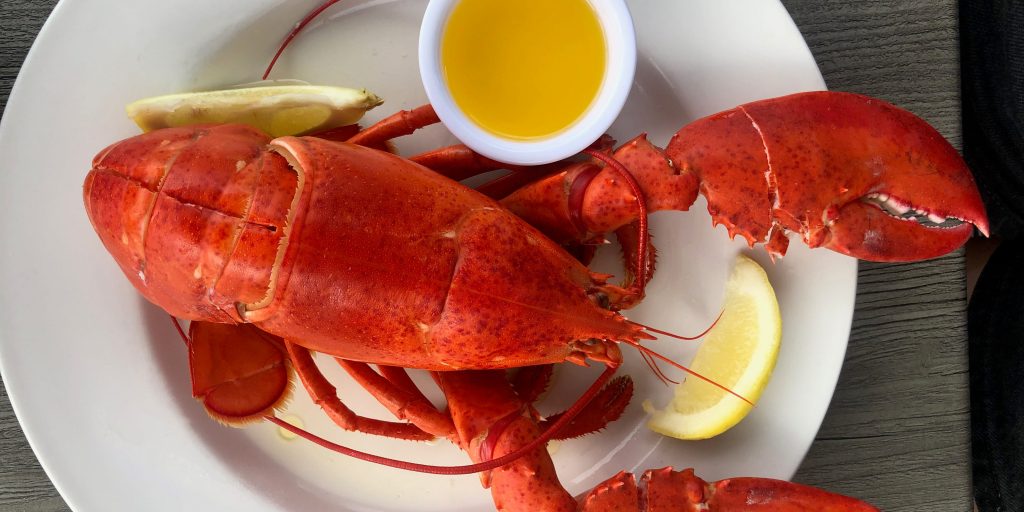- Whole lobsters can be intimidating to eat, but all you need are a few tools and some know-how.
- To break down a lobster, you'll want to shuck the claws, then the tail and head, then the legs.
- Avoid eating the shells, cartilage, and tail vein, as they're not edible and/or tasty.
Sweet, mellow lobster is an ocean delicacy for good reason: the meat from these flavorful crustaceans makes a delicious addition to a sandwich roll, a creamy seafood pasta, and even an Eggs Benedict. But many seafood aficionados insist that the best way to enjoy this maritime treat is to eat the lobster whole, which can be daunting.
If you've never eaten a whole lobster before, you might feel a bit confused about how to dig in – after all, the lobster's hard shell doesn't give you an obvious way to access the tender meat. Luckily, we're providing you with clear step-by-step instructions for how to get the most out of these tasty creatures with the help of owner and seafood expert Steve Kingston of The Clam Shack in Kennebunk, Maine.
Step 1: Assemble your materials
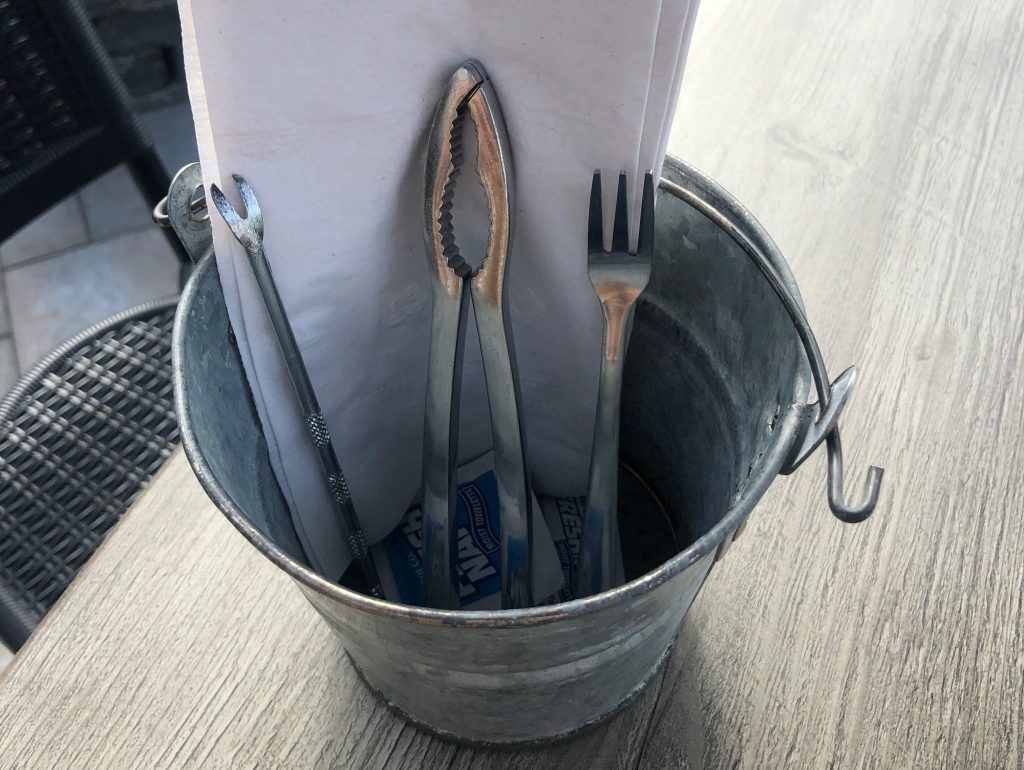
You'll want to start by making sure you have everything you need, including the lobster. Certain lobsters are easier to eat than others, Kingston says. "If you're buying lobster, you should try to choose 1 to 1.5 pound 'new shell' lobsters, as these shells will be soft enough to break with your hands or with a nutcracker if you need a little more oomph. Hard shell lobsters can be tougher to crack, but a nutcracker will still do the job," he explains.
New shell lobsters, also known as "soft shell lobsters," are in-season in cold-water regions (like Maine and other parts of New England) from early June through mid November, so if your local fishmonger brings in Northeastern lobster, then you're likely getting new shell versions during that time period. From December through May, most seafood shops carry hard-shell lobsters. If you're not sure which ones are in stock at any given time, ask the fishmonger for guidance.
Regardless of the type of lobster, it's helpful to have the following equipment on hand:
- A nutcracker and/or lobster scissors. This tool can help break tough shells, giving you access to the meat within.
- An oyster fork or a seafood pick. Standard table forks are too wide to help you scrape lobster meat out of tight spots like the claws and the tail. A smaller oyster fork (or an even thinner seafood pick) is much easier to fit into narrow nooks and crannies.
- Napkins. Eating a whole lobster is a messy endeavor, so you'll want to be prepared. Keep more napkins near you than you think you'll need, and if you want to go the extra mile, also grab a lobster bib and a wet wipe.
Step 2: Shuck the claws and knuckles
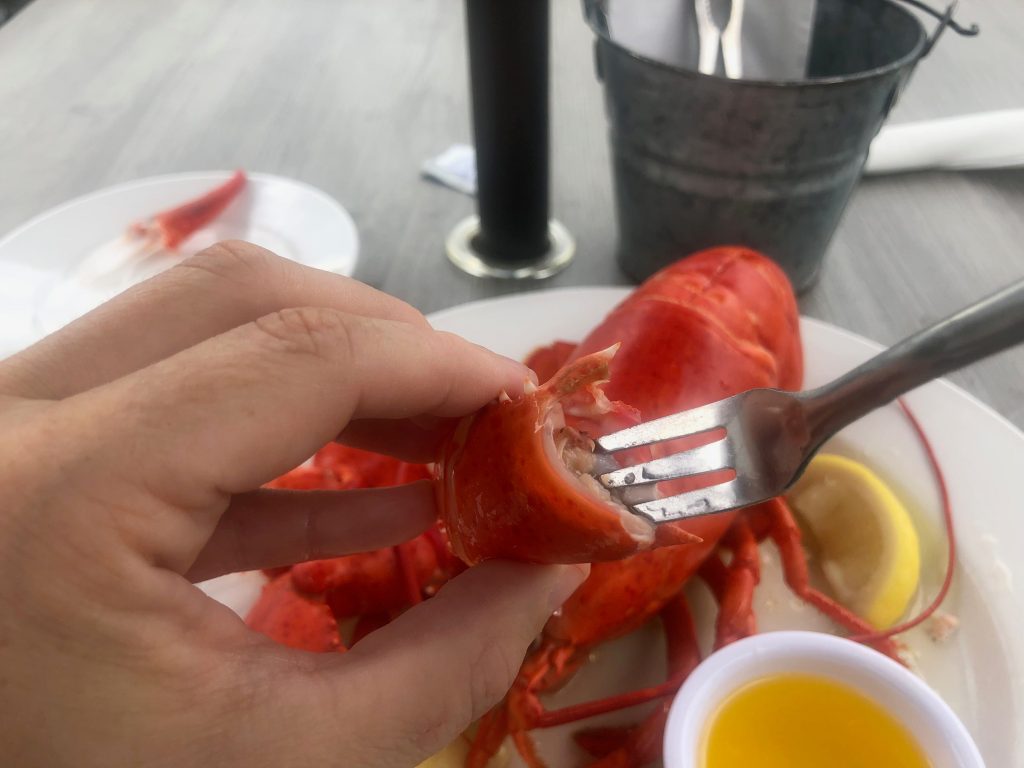
"There are three parts to a lobster: the claws and knuckles (arms), the carapace (body), and the tail," Kingston says. Kingston recommends starting with the claws.
To do so, use your fingers (or a nutcracker or lobster scissors, if you'd like some extra force) to break the claw and knuckle away from the body. "Be careful of the water that's going to come out every time you crack the shell. Then, break the claw away from the knuckle," Kingston says.
Once you've separated the claw from the knuckle, use your fingers to pull off the "thumb" of the claw. To get the meat out of the bigger part of the claw, break the claw in half using either your hands or a nutcracker, and gather the meat with your oyster fork. "Take care not to grind [bits of the] shell into the inside meat," says Kingston.
Don't forget about the knuckles either, Kingston says. "This is arguably the sweetest and tenderest meat in the whole lobster, so don't miss it." To access it, break the knuckle with your fingers or a nutcracker and pick out the meat with a fork or pick. You can also use seafood scissors to get a cleaner cut. "Slide the scissor into either end of the jointed knuckle close to the shell, avoiding the meat. Snip to the opposite end, and then flip it over and repeat," Kingston says.
Step 3: Shuck the lobster tail and head
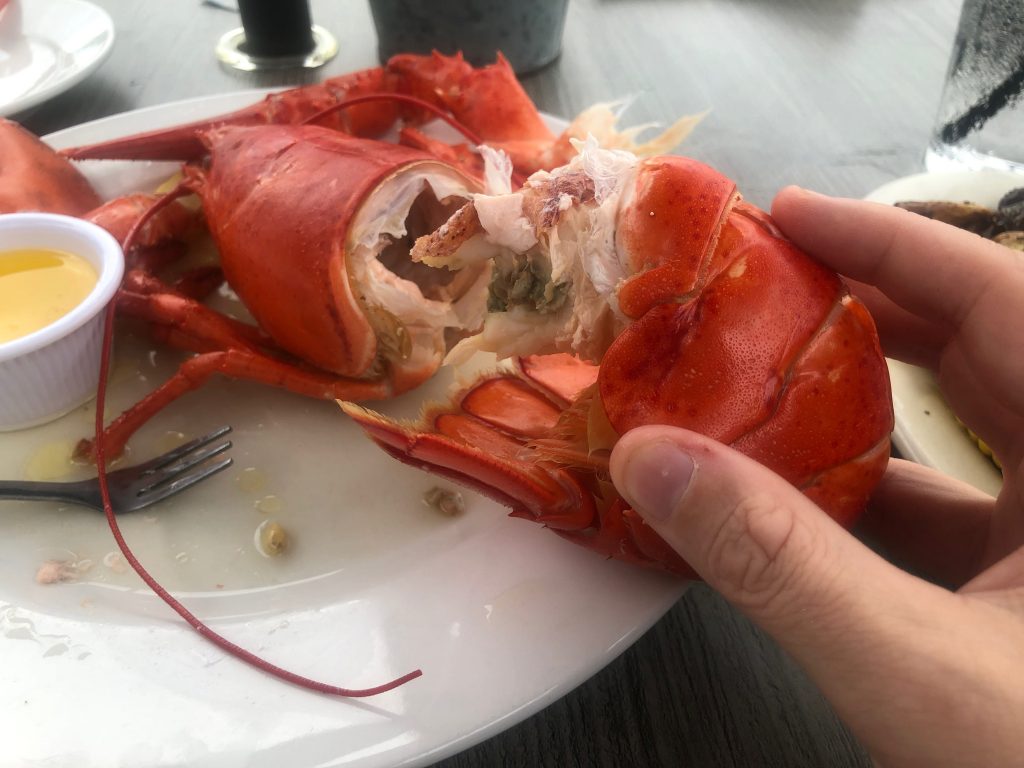
The lobster tail is home to the firmest and richest meat, so you'll want to go in with a clear game plan for accessing all of that goodness.
"Separate the tail from the carapace by holding the body firmly in one hand and bending the tail backwards until it breaks away," says Kingston.
Break the tail open by squeezing the shell until it cracks, exposing the meat. You can then pull the meat out with your hands or a seafood fork. Tail meat is firmer than claw meat, so it's less slippery and easier to grab with your fingers.
You can get even more meat by removing the center flap (lobster pros call it "skin" since it has a softer, flesh-like texture), starting at the wide end and pulling it toward the narrower end of the tail. The meat under the center flap is edible, but Kingston recommends avoiding the black or green vein at the center of the tail, which you'll want to remove and discard.
Just as you can pull the tail away from the carapace, you can do the same with the head. There are plenty of tender bits of meat in the head, so grab your fork or pick and use the sharp tines to scrape out the small nuggets. get to work!
Step 4: Suck out the leg meat
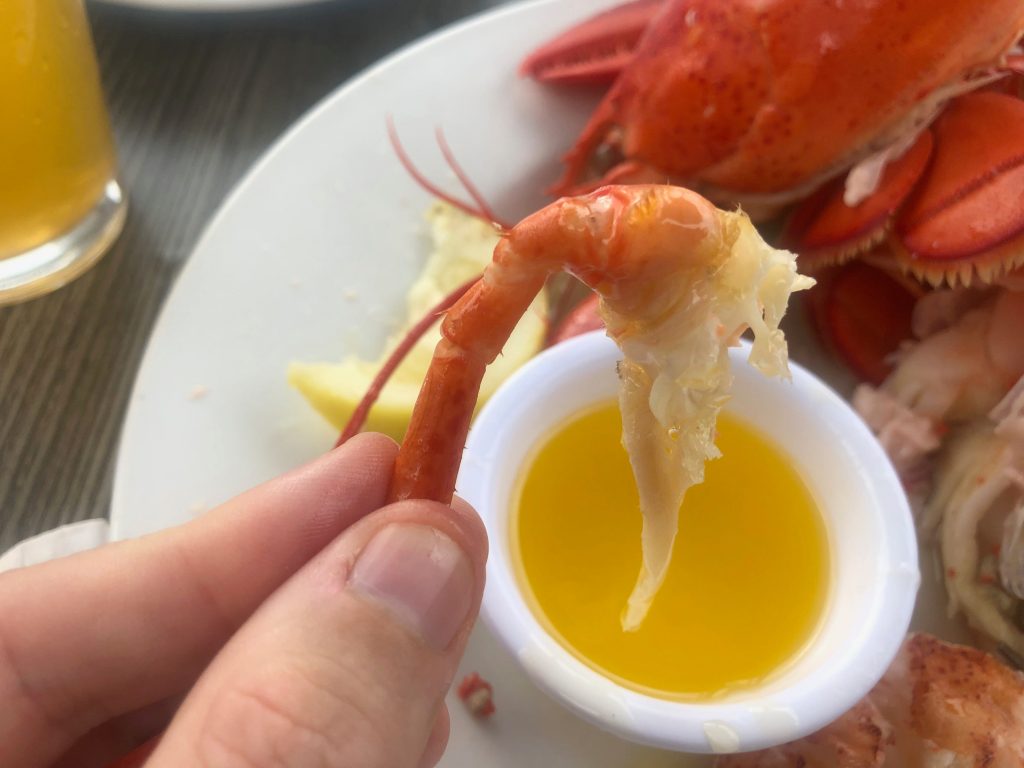
Like crab legs, lobster legs contain tasty edible meat. "Hold the carapace red-shell-side up in one hand and squeeze while simultaneously using the other hand to pull the underparts in one piece away from the head," says Kingston. You can then break each leg away from the body and suck out the tender leg meat, then split the carapace in half lengthwise (seafood scissors can be helpful here) and pick out the remaining nuggets of meat from the leg joints.
What parts of the lobster do you not eat?
All of the meat inside the lobster is fair game for eating. That said, there are certain non-meat parts that shouldn't be consumed. The hard shell can't be digested and is also very difficult to swallow, presenting a choking hazard.
Kingston notes that the black or green vein at the center of the tail shouldn't be eaten, as it's part of the lobster's digestive system and doesn't have a palatable flavor. The feather-shaped cartilage inside the larger claw, along with any of the cartilage and feathery parts within the body of the lobster aren't digestible as well.
As far as the eggs, also known as the roe, and tomalley are concerned, both can be eaten if you like, despite the FDA's warnings about tomalley. The tomalley has a strong, very concentrated lobster flavor, and some lobster fans consider it a delicacy. The roe has a sweet and salty lobster flavor, and it's very popular as a garnish. That said, be sure to only eat lobster roe if it's bright red – black roe is raw and unsafe for consumption.
Insider's takeaway
Whole lobster is a seafood luxury, and while eating it can be a messy process, it's worth the effort. Use your hands or a nutcracker to pull off the claws and split them open, then dig out the meat with your seafood fork. Do the same with the tail and the head, then finish up by pulling off the legs and sucking out the flavorful meat. Don't forget to dip the lobster in melted butter and drizzle it with lemon juice.
